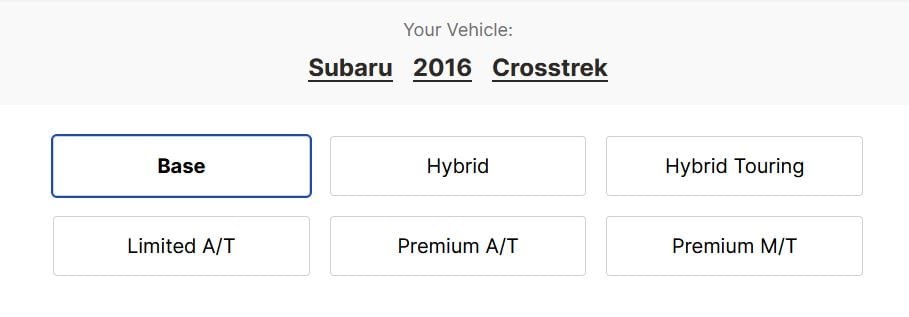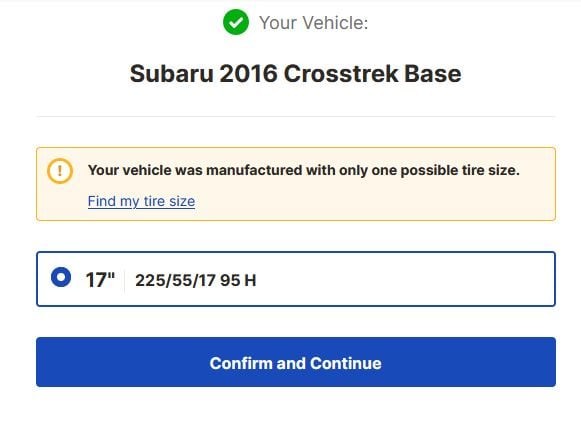What Is Trim Of Car? Vehicle trim refers to the distinct versions of a particular car model, each offering a unique set of features and specifications. CARS.EDU.VN helps you navigate the complexities of vehicle trims, ensuring you make the right choices for your needs. Understanding these variations is crucial for selecting the perfect vehicle that aligns with your preferences and budget, and we provide in-depth information on trim levels, packages, and options to help you find the perfect match and avoid mismatched car components.
1. What Does “Trim Level” Really Mean?
Trim level refers to the specific configuration of a vehicle model. Think of it as different editions of the same car, each offering a unique combination of features, options, and aesthetics. When purchasing a vehicle, dealerships present various trim levels tailored to accommodate diverse budgets and driving preferences. For instance, you might encounter hybrid, sport, or eco-friendly variations of a particular model.
Trim levels extend beyond mere cosmetic enhancements; they encompass fundamental differences in vehicle attributes. As the term “trim” suggests, these variations impact aspects such as engine size, interior upholstery, center console design, and the materials utilized in construction.
Consider the example of a Toyota Camry. While one individual may drive a Camry LE, another may opt for the sportier Camry TRD. Despite sharing the same model name, the disparity in trim levels translates to significant differences in features between the two vehicles. While the LE variant may boast superior fuel efficiency compared to the TRD (28/39 city/highway mpg versus 22/31 mpg), the TRD offers enhanced acceleration capabilities.
| Feature | 2022 Toyota Camry LE (Gas) | 2022 Toyota Camry TRD |
|---|---|---|
| Engine | 2.5-Liter 4-Cylinder | 3.5-Liter V6 |
| Horsepower | 203 hp | 301 hp |
| Drivetrain | Front-Wheel Drive | Front-Wheel Drive |
| Front Wheel Size | 17 x 7.5 inches | 19 x 8.5 inches |
| Rear Wheel Size | 17 x 7.5 inches | 19 x 8.5 inches |
| Front Tire Size | P215/55VR17 | P235/40VR19 |
| Rear Tire Size | P215/55VR17 | P235/40VR19 |
| Base Curb Weight | 3,310 lbs | 3,575 lbs |
| Fuel Economy (City/Hwy) | 28/39 mpg | 22/31 mpg |




Manufacturers often employ different tire sizes based on the vehicle’s trim level. Tires are not universally interchangeable; they exert considerable influence over a vehicle’s performance. Consequently, manufacturers may adjust tire sizes to complement a vehicle’s design. Certain trim levels may be engineered to accommodate heavier loads, necessitating larger tires, while others may prioritize smaller tires to reduce costs or align with an aerodynamic, lightweight design.
CARS.EDU.VN understands the importance of trim levels in customizing your driving experience.
2. Why is Understanding Trim Levels So Important?
Understanding trim levels is crucial because it signifies more than just cosmetic variations; it embodies fundamental differences in the materials and craftsmanship of your vehicle. Different vehicle trims necessitate distinct tire sizes, and it’s imperative to recognize that utilizing an incorrect tire size, even if seemingly close, can have detrimental consequences.
Employing tires not specifically intended for your car or incorporating mismatched tires can compromise driving safety. Incompatible tire sizes can result in discomfort during driving and uneven wear patterns, culminating in an unpredictable and potentially hazardous driving experience. Moreover, selecting the wrong tire size can adversely affect fuel efficiency, leading to increased operational costs over time.
Given the profound impact of trim levels on vehicle performance and safety, meticulous attention to identifying your car’s exact trim is paramount. By accurately determining your vehicle’s trim, you can ensure compatibility with essential components like tires and mitigate potential risks associated with mismatched parts.
At CARS.EDU.VN, we emphasize the significance of understanding trim levels for optimizing vehicle performance, ensuring safety, and maximizing long-term value.
3. Where Can You Locate Your Vehicle’s Trim Information?
Identifying your vehicle’s trim level can be accomplished through various means. Here are several reliable methods to ascertain this information:
- External Chassis: Inspect the exterior of your car for a sticker, decal, or lettering indicating the trim level. This is typically located near the trunk.
- Owner’s Manual: Consult your vehicle’s owner’s manual, which should provide comprehensive details regarding the make, model, year, and trim of your vehicle.
- Vehicle Identification Number (VIN): Utilize the VIN, a unique identifier for your vehicle, to access detailed information, including the trim level. Online VIN decoding tools, such as Decode the VIN, can assist in this process.
- Vehicle Registration: Review your vehicle’s registration documents, which may include details about the make, model, year, and trim of your car.
Additionally, conducting a Google search for your vehicle can yield insights into the various trim packages available. This method is particularly useful if you’re contemplating purchasing a vehicle and want to explore the different trim options before making a decision. It’s also beneficial when you have specific tires in mind and want to ensure compatibility with a prospective vehicle.
3.1. Where to Find Your Vehicle’s VIN?
Locating your vehicle’s VIN is essential for accessing vital information, including the trim level. The VIN can be found in several locations:
- Sales Receipt: Check the sales receipt, especially if you purchased the vehicle from a dealership, as it typically includes the VIN.
- Dashboard Plaque: Look for an etched plaque on the driver’s side dashboard, visible from the outside through the windshield, near the wipers.
- Doorjamb Sticker: Inspect the manufacturer’s sticker on the doorjamb, typically on the driver’s side.
- Registration Papers: Refer to your state registration papers, which you received upon purchasing and/or renewing your license plates.
CARS.EDU.VN provides valuable resources and tools to assist you in locating your vehicle’s trim information and VIN, ensuring accuracy and facilitating informed decision-making.
4. Deciphering Trim Levels, VINs, and Tire Sizes: Ensuring Compatibility
Ensuring compatibility between trim levels, VINs, and tire sizes is crucial for optimal vehicle performance and safety. Here’s how to determine the correct tire size for your vehicle’s trim level:
- Door Jamb Reference: Begin by consulting the door jamb of your vehicle to identify the manufacturer’s recommended tire size, the VIN and the recommended tire pressure to pump your tires to.
- Vehicle Manual Verification: Cross-reference this information with the specific trim details outlined in your vehicle’s manual. Additionally, verify the trim by examining your license registration or purchase paperwork.
- Tire Matching Tools: Leverage online tire matching tools, such as the one provided by Tire Agent, to search for tires that precisely fit your vehicle’s make, model, and trim.
When shopping for tires, CARS.EDU.VN advises providing accurate vehicle information to ensure compatibility. While searching for specific tire sizes is an option, initiating your search with your vehicle’s make, year, model, and trim is recommended for optimal results.
Tire matching tools extend beyond just tires; they also pertain to wheels, which are trim-dependent. Once you input your car’s manufacturer, year, and model, you’ll be prompted to select your vehicle trim, immediately revealing the factory-recommended tire size for that specific trim.
Recognizing the complexities associated with tire sizes, CARS.EDU.VN offers comprehensive resources and expert guidance to ensure you select the correct tires for your vehicle’s trim, mitigating the risk of incompatibility and optimizing performance.
5. The Nuances of Vehicle Trim Levels
Vehicle trim levels offer a spectrum of choices, each tailored to cater to specific preferences and requirements. From base models to high-end configurations, understanding the nuances of trim levels empowers consumers to make informed decisions aligned with their individual needs and desires. Here’s an exploration of the key distinctions and features associated with various trim levels:
5.1. Base Models: The Essentials
Base models represent the entry-level trim level, offering fundamental features and functionalities at an accessible price point. While base models may lack some of the advanced amenities found in higher trims, they provide essential transportation solutions without compromising on safety or reliability. Key characteristics of base models include:
- Standard engine options
- Basic interior amenities
- Essential safety features
- Affordable pricing
For consumers prioritizing affordability and practicality, base models offer a compelling option that delivers dependable performance without unnecessary frills.
5.2. Mid-Range Trims: Striking a Balance
Mid-range trims strike a harmonious balance between affordability and enhanced features, catering to consumers seeking a blend of comfort, convenience, and value. These trims typically offer a more extensive array of amenities compared to base models, including:
- Upgraded interior materials
- Advanced infotainment systems
- Enhanced safety technologies
- Additional comfort features
Mid-range trims appeal to consumers who desire a more refined driving experience without venturing into the premium price range. They represent a sweet spot that combines practicality with desirable upgrades.
5.3. High-End Trims: Indulging in Luxury
High-end trims epitomize luxury, performance, and sophistication, catering to discerning consumers who demand the utmost in automotive excellence. These trims boast an impressive array of premium features, cutting-edge technologies, and exclusive design elements, including:
- Premium leather upholstery
- Advanced driver-assistance systems
- High-performance engine options
- Exclusive styling cues
High-end trims represent the pinnacle of automotive engineering and craftsmanship, offering an unparalleled driving experience characterized by opulence, innovation, and prestige.
5.4. Sport Trims: Unleashing Performance
Sport trims cater to driving enthusiasts who prioritize performance, agility, and dynamic handling. These trims typically feature sport-tuned suspensions, enhanced engine options, and aerodynamic enhancements that elevate the driving experience to new heights. Key attributes of sport trims include:
- Sport-tuned suspension systems
- More powerful engine options
- Aerodynamic body kits
- Sporty interior accents
Sport trims appeal to drivers who crave adrenaline-pumping performance and exhilarating driving dynamics, transforming everyday commutes into thrilling adventures.
5.5. Hybrid Trims: Embracing Efficiency
Hybrid trims combine the benefits of traditional gasoline engines with electric propulsion systems, offering enhanced fuel efficiency, reduced emissions, and eco-friendly driving solutions. These trims appeal to environmentally conscious consumers who seek to minimize their carbon footprint without sacrificing performance or practicality. Key features of hybrid trims include:
- Hybrid powertrain systems
- Regenerative braking technology
- Eco-friendly driving modes
- Fuel-efficient design
Hybrid trims represent a sustainable approach to transportation, delivering exceptional fuel economy and environmental responsibility without compromising on driving pleasure.
CARS.EDU.VN offers comprehensive resources and expert insights to help you navigate the diverse landscape of vehicle trim levels, empowering you to make informed decisions that align with your unique preferences, priorities, and budget.
6. Decoding the Jargon: Essential Trim Level Terminology
Navigating the world of vehicle trim levels can sometimes feel like deciphering a foreign language, with manufacturers employing a myriad of acronyms, abbreviations, and technical terms to describe various features and options. To help demystify the jargon, here’s a glossary of essential trim level terminology:
- AWD (All-Wheel Drive): A drivetrain system that distributes power to all four wheels, enhancing traction and stability, particularly in adverse weather conditions.
- CVT (Continuously Variable Transmission): An automatic transmission that provides seamless gear changes and optimized fuel efficiency by continuously adjusting the gear ratio.
- DRL (Daytime Running Lights): Safety lights that automatically illuminate when the vehicle is in operation, enhancing visibility and reducing the risk of accidents.
- FWD (Front-Wheel Drive): A drivetrain system that delivers power to the front wheels, offering fuel efficiency and responsive handling.
- GPS (Global Positioning System): A satellite-based navigation system that provides real-time location tracking, turn-by-turn directions, and points of interest.
- HUD (Head-Up Display): A transparent display that projects crucial vehicle information, such as speed, navigation prompts, and safety alerts, onto the windshield within the driver’s line of sight.
- LED (Light Emitting Diode): Energy-efficient and long-lasting lighting technology used for headlights, taillights, and interior illumination, offering enhanced brightness and visibility.
- MPG (Miles Per Gallon): A measure of fuel efficiency, indicating the number of miles a vehicle can travel on one gallon of gasoline.
- RWD (Rear-Wheel Drive): A drivetrain system that transmits power to the rear wheels, offering sporty handling characteristics and enhanced acceleration.
- Sunroof/Moonroof: A transparent panel in the roof of the vehicle that allows natural light and fresh air to enter the cabin, enhancing the driving experience.
Understanding these common trim level terms will empower you to navigate the automotive marketplace with confidence, enabling you to make informed decisions based on your specific needs and preferences. CARS.EDU.VN is committed to providing clear, concise, and accessible information to help you decipher the complexities of vehicle trim levels and make well-informed purchasing decisions.
7. Trim-Specific Features That Impact Your Choice
Beyond the general categories, specific trim levels often include unique features that significantly influence a buyer’s decision. Here’s a closer look at some examples:
- Infotainment Systems: Higher trims often offer larger touchscreens, advanced navigation, and premium audio systems from brands like Bose or Harman Kardon.
- Driver-Assistance Technologies: Features like adaptive cruise control, lane-keeping assist, blind-spot monitoring, and automatic emergency braking become more prevalent as you move up the trim ladder.
- Seating and Interior Materials: Expect to see upgrades from cloth to leather upholstery, heated and ventilated seats, and even massaging seats in top-tier trims.
- Exterior Styling: Unique alloy wheel designs, chrome accents, LED lighting signatures, and aerodynamic enhancements are common differentiators between trims.
- Performance Upgrades: Sport-oriented trims might include performance-tuned suspensions, upgraded brakes, and more powerful engines.
Choosing the right trim involves carefully weighing which of these features are most important to you.
8. Real-World Examples of Trim Level Differences
To further illustrate the impact of trim levels, let’s consider a few real-world examples across different vehicle types:
- Honda Civic: The base LX trim offers essential features, while the EX adds a sunroof, upgraded wheels, and Apple CarPlay/Android Auto integration. The Touring trim includes leather seats, a premium audio system, and advanced safety features.
- Ford F-150: The XL trim is a basic work truck, while the XLT adds features like chrome exterior trim and improved infotainment. The Lariat trim brings leather seats, a larger touchscreen, and more driver-assistance technologies. The Platinum and Limited trims offer ultimate luxury with premium leather, massaging seats, and advanced technology features.
- BMW 3 Series: The base 330i offers a balance of performance and luxury, while the M340i adds a more powerful engine and sport-tuned suspension. The M3 is the ultimate performance version with track-ready components.
These examples highlight how trim levels can drastically alter the features, performance, and price of a vehicle.
9. Navigating the Used Car Market and Trim Levels
When shopping for used cars, understanding trim levels becomes even more critical. Here’s what to keep in mind:
- Verify the Trim: Don’t rely solely on the seller’s description. Use the VIN to confirm the exact trim level and original equipment.
- Assess Feature Condition: Carefully inspect the condition of trim-specific features like leather seats, infotainment systems, and advanced safety technologies.
- Consider Depreciation: Higher trims often depreciate more quickly, potentially offering a better value in the used market.
- Factor in Maintenance Costs: Some trim-specific features may have higher maintenance costs. For example, a premium audio system could be more expensive to repair.
CARS.EDU.VN provides resources to help you research trim levels and assess the value of used cars, ensuring you make a smart investment.
10. The Future of Trim Levels: Customization and Personalization
The automotive industry is moving towards increased customization and personalization. Expect to see trim levels evolve to offer more modular options, allowing buyers to tailor their vehicles to their exact needs and preferences. This could include:
- A La Carte Options: Instead of fixed trim packages, buyers might be able to select individual features and options.
- Software-Based Upgrades: Some features could be activated or upgraded via software updates, allowing owners to customize their vehicles over time.
- Subscription Services: Automakers might offer subscription services for certain features like advanced driver-assistance systems or connected car services.
CARS.EDU.VN will keep you updated on the latest trends in trim levels and customization, helping you navigate the future of automotive ownership.
11. Frequently Asked Questions (FAQs) About Car Trims
-
What is the difference between a trim and a package?
A trim is a specific version of a vehicle model that comes with a pre-determined set of features, while a package is an optional add-on that can be added to a specific trim to include additional features.
-
How do I know which trim level is right for me?
Consider your budget, driving needs, and desired features. Research different trim levels and compare their features and prices to find the one that best fits your needs.
-
Can I upgrade my car to a higher trim level after purchase?
While some features can be added aftermarket, it’s generally not feasible or cost-effective to upgrade a car to a higher trim level after purchase. It’s better to choose the trim level you want from the start.
-
Do trim levels affect insurance costs?
Yes, higher trim levels with more features and technology may result in higher insurance costs due to the increased value and potential repair costs of the vehicle.
-
Are trim levels the same across all manufacturers?
No, trim levels vary across manufacturers. Each manufacturer has its own naming conventions and feature configurations for its trim levels.
-
What does “fully loaded” mean?
“Fully loaded” refers to a vehicle that has all available options and features for its trim level, including premium amenities, advanced technology, and luxury appointments.
-
Do trim levels affect resale value?
Yes, higher trim levels with desirable features tend to have better resale value compared to base models.
-
Where can I find reviews and comparisons of different trim levels?
CARS.EDU.VN offers comprehensive reviews and comparisons of different trim levels to help you make an informed decision.
-
Can I negotiate the price of a specific trim level?
Yes, you can negotiate the price of a specific trim level with the dealership. Research the market value of the trim level you want and be prepared to negotiate for the best possible price.
-
How do electric vehicle trims differ from gasoline vehicle trims?
Electric vehicle trims often focus on battery range, charging capabilities, and energy-efficient features, in addition to the typical comfort, convenience, and technology options found in gasoline vehicle trims.
Conclusion: Making an Informed Decision with CARS.EDU.VN
Understanding vehicle trim levels is essential for making an informed decision when purchasing a new or used car. By researching different trims, comparing features, and considering your individual needs and preferences, you can find the perfect vehicle that fits your budget and lifestyle.
Remember, CARS.EDU.VN is here to assist you every step of the way. Our website offers a wealth of information, including detailed reviews, comparisons, and expert advice, to help you navigate the complexities of the automotive market. Whether you’re looking for a basic commuter car or a fully loaded luxury vehicle, CARS.EDU.VN has the resources you need to make a smart and confident purchase.
Ready to find the perfect car for you? Visit CARS.EDU.VN today to explore our extensive inventory, read expert reviews, and connect with trusted dealerships in your area. Don’t forget to use our VIN decoder to verify trim levels and ensure you’re getting the features you want. Contact us at 456 Auto Drive, Anytown, CA 90210, United States, or reach out via Whatsapp at +1 555-123-4567 for personalized assistance. Let cars.edu.vn be your guide to automotive excellence!
